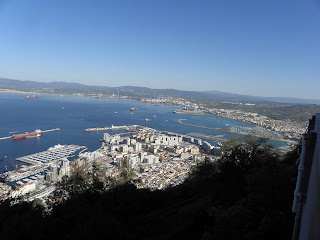The sovereignty of Gibraltar is a point of contention in Anglo-Spanish relations because Spain asserts a claim to the territory. Gibraltarians rejected proposals for Spanish sovereignty in a 1967 referendum and, in a 2002 referendum, the idea of shared sovereignty was also rejected.
Military control of the Strait of Gibraltar has historically been the most important use of Gibraltar, allowing Britain to defend its trade lanes to the East. The British admiral Lord Fisher stated that Gibraltar was one of the five keys that locked the world, together with Dover, Alexandria, Cape of Good Hope and Singapore, all of which were once controlled by Britain.
Its military relevance has reduced with the construction in 1953 of the US Naval Station Rota (the biggest Allied base in the area) and with the end of the Cold War, but it is still an important position as more than one quarter of the global maritime traffic transits through the strait every year. Controlling the strait is of vital importance to NATO. The task of controlling the strait has been traditionally assigned by NATO to the UK, but the recent advances that Spain has made in its armed forces and the bases Spain has in the zone have made NATO reconsider this. However, the tense relations that Spain had with the American administration under George W. Bush and the special friendship of the US with the UK have caused NATO to take a more favorable position towards the UK and Morocco for control of the strait.
Tri us- Me Stan, Vasil and Vasko took the lift to the top, walked around the paths, enjoyed the views both sides and took a lot of photos, presented here. We met more monkeys, than people on the way. Next BlogSpot.presents our monkey company around Gibraltar rock and state. One motor biker droved his bike to the top. There were elegant ladies on the way too.





































































































